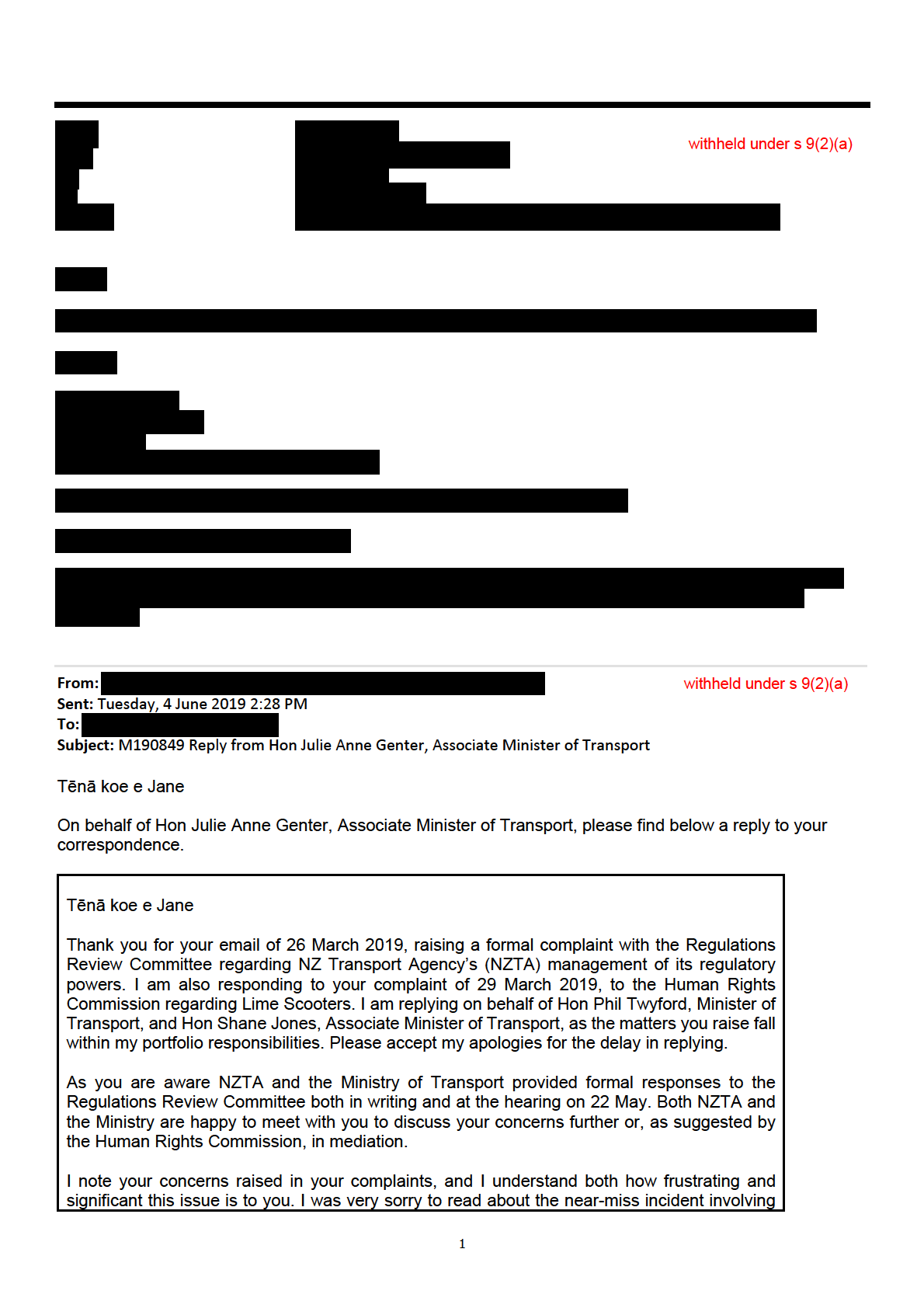


you and your father while walking on Jervois Road in Auckland. It is extremely important to me
that New Zealanders feel safe – and are safe – when using our footpaths.
The Government is committed to building a transport system that reduces congestion, improves
safety, reduces carbon emissions, and provides greater transport choice. E-scooters, and other
low-powered devices such as e-bikes, can offer a great way to get around, and I am sure that
if they are used safely, they will form an important part of how we move around our towns and
cities in coming years.
You have raised a number of important concerns regarding both e-scooters and other low-
powered devices. As the Ministry of Transport noted to the Regulations Review Committee,
Ministry of Transport officials are currently developing a regulatory package – Accessible
Streets – to improve the safety and accessibility of footpaths for all types of footpath users.
The proposed rule changes that will be part of Accessible Streets are designed to increase the
safety and accessibility of our footpaths and cycle paths.
While the current rules governing the use of footpaths anticipate their mixed use, the proposed
rule changes respond, in part, to the increasing rate of use of various forms of vehicles on our
streets and footpaths.
The proposed rules will include:
enabling wheeled recreational devices – including e-scooters – to be used in cycle lanes
and cycle paths. The intention of this rule change would be to encourage faster wheeled
recreational devices to move off the footpath, and onto parts of the road where they are
less likely to come into conflict with either slow-moving pedestrians or fast-moving
vehicles;
to ensure the safe use of footpaths, we propose to consult on a framework of new rules
to govern
how vehicles can be used on the footpath. The framework comprises general
and easily understood requirements that are a mixture of principles (users must behave
in a certain way), performance (vehicles must not exceed a specified speed) and
prescription (vehicles may be no larger than a specified size). In part, this approach
anticipates and is designed to manage the likelihood of new and emerging technologies
that might operate on the footpath for some, or all, of their journey in future.
Vehicles such as e-scooters, e-bicycles and other low-powered devices can offer significant
transport benefits to users and non-users alike. They provide low-cost forms of mobility for short
trips, often require no parking and can complement public transport. When used as an
alternative to a private car their use has a public benefit of reducing congestion and harmful
vehicle emissions. However, the growth in use of these vehicles can come with risks, as they
are operated in contested space on the footpath and roadway.
In the long-term, changes to street design may allow us to reap the benefits of vehicles like e-
scooters, and mitigate their risks. For example, greater provision of wide shared paths or bike
lanes on busy streets will separate e-scooter users from fast moving car traffic, as well as
people walking on the footpath. However, in the interim it is important that we have a regulatory
environment that supports safe and accessible travel for all road users using available
infrastructure.
I expect formal consultation on Accessible Streets to begin on in the second half of 2019
Once consultation on the package commences in the next few months, I would encourage you
to share your views. I have passed your correspondence on to Ministry officials leading this
work, and have asked them to contact you directly with consultation information when it is
known.
Thank you again for taking the time to raise these important issues with me.
Nāku noa, nā
2






